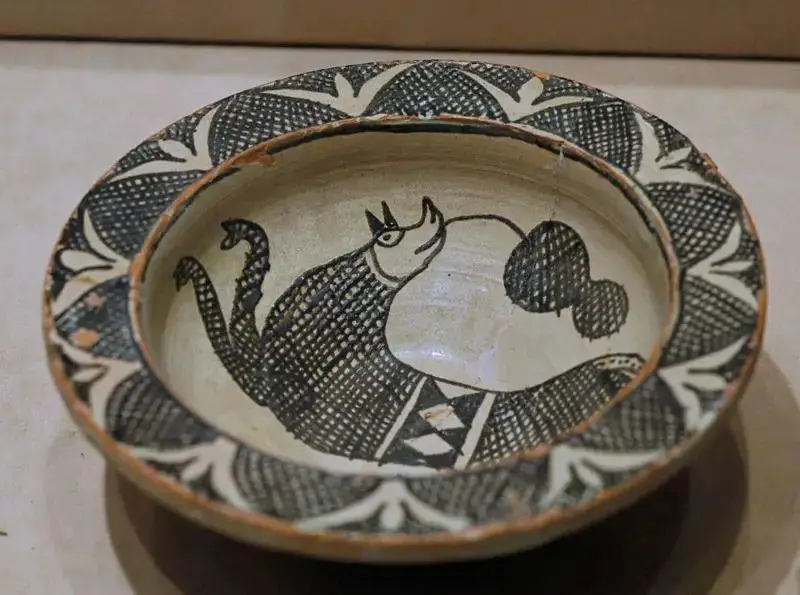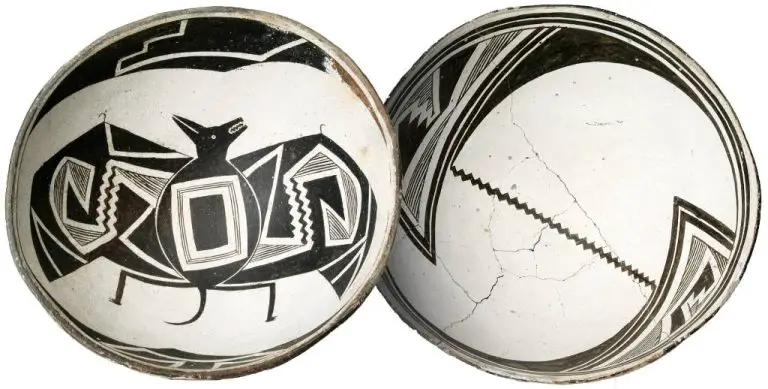How Do I Identify Italian Pottery Marks?
Italian pottery has a long and rich history dating back to the Middle Ages. Maiolica, an Italian tin-glazed earthenware, was first produced around 1350 and Italian potters became renowned across Europe for the quality of their work. Some of the most well-known Italian pottery manufacturers over the centuries include Ginori, Cantagalli, Bitossi, Capodimonte, Richard Ginori, Montelupo, Deruta, and Faenza. Their distinctive styles and marks make Italian ceramics highly collectible today.
Identifying marks is key to properly attributing pieces of Italian pottery. It enables collectors and appraisers to learn when and where a piece was made, verify authenticity and value, and appreciate the full history behind each unique item. Marks can indicate the manufacturer, date of production, artist’s signature, and details about the materials and methods used. Since many marks are difficult to decipher or have been widely copied, accurate research is important to avoid mistaken attributions.
This guide will provide an overview of popular Italian pottery makers, explain how to interpret common Italian pottery marks from different eras, and offer guidance on distinguishing authentic marks from fakes or reproductions. With a basic understanding of marks, anyone can unlock the story behind their Italian ceramics.
Where to Look for Marks
When trying to identify an Italian pottery mark, one of the first places to check is the underside of pieces. Marks are often found on the bottom of plates, platters, cups, bowls, and other functional ware. On decorative items like figurines and vases, look on the underside of the base or foot. Marks may be impressed, engraved, or printed on the clay before firing.
On figurines, animal sculptures, and decorative objects, marks are frequently located on the bottom of the base. Turn over the item and examine the underside for any impressed, printed, or painted marks. Marks on the bottom of figurines are typically small and may require some effort to read.
No matter what type of piece it is, carefully check the entire bottom surface for any lettering, numbers, symbols or other identifying marks. These are usually small and easily missed if you don’t thoroughly inspect the underside of items.
Popular Italian Pottery Manufacturers
Italy has a long and illustrious history of ceramic production. Some of the most well-known and collectible Italian pottery comes from these historic manufacturers:
Ginori
One of the most famous is Ginori, founded in 1735 by Marchese Carlo Ginori. Ginori is known for its finely crafted porcelain and innovative glazes. Many of their pieces feature intricate gilt work and hand-painted decoration. Their rich blue “Ginori Blu” is especially iconic. Ginori remains an important producer today under the Gucci brand [1].
Bitossi
Bitossi was established in the 1920s and became well-known in the postwar period for their innovative ceramic designs, often with colorful abstract decoration. Important Bitossi designers include Ettore Sottsass and Aldo Londi. Bitossi ceramics from the 1950s-70s are very collectible today.
Gabbianelli

The Gabbianelli workshop was founded in 1911 and was an important maker of maiolica style ceramics. Their pieces often featured ornate decorative elements like scrollwork and coats of arms. Gabbianelli remained family-run until the 1980s and many of their earlier pieces are now antique collectibles.
Richard Ginori
Richard Ginori was founded in the 1920s as an offshoot of Ginori. They produced high quality porcelain dinnerware and decorative pieces. Richard Ginori was later acquired by Gucci, but the brand maintains its reputation for fine Italian craftsmanship.
Understanding Mark Formats
Italian pottery marks can appear in a variety of formats, providing information about the date of production, style, artist, and manufacturer. Some of the key components to look for include:
Date codes: Many Italian ceramic marks include a two or four digit date code, indicating the year production began for that style or pattern. For example, the mark might include “50” to represent 1950. Some manufacturers used slightly more complex date codes, with one or two letters followed by two numbers (e.g. AR50).
Style numbers: Numbers or letter/number combinations are often used to identify the form or decorative style of a particular piece. This provides a way to catalog designs across a manufacturer’s offerings. Style details may be included along with the date code.
Artist signatures: Higher-end art pottery may be signed by the individual artist, using a stylized version of their name or initials. This signifies that the piece was hand-decorated. The artist’s mark is typically paired with the larger manufacturer’s mark.
Company names or logos: The main manufacturer’s identifying name or logo is the key signature on any mark. This confirms the source of the ceramic and acts as the primary label. Logos may consist of full brand names, abbreviations, or iconic symbols.
Some Italian ceramic marks also incorporated location details, quality statements, or catalog numbers. But date codes, style numbers, artist signatures, and company identifiers form the core components of most vintage and antique Italian pottery marks.
Date Codes
Many Italian pottery marks include a date code sequence to indicate when the piece was produced. These date codes are often formatted as either a two-digit or four-digit number sequence.
Two-digit codes are commonly used to represent the year of production. For example, “95” indicates a piece made in 1995. Some manufacturers used a single digit, where “5” represents 1995 and “0” is 2000, etc.
Four-digit codes provide more specificity on the date. The first two digits represent the year, while the last two indicate the month. So “9503” identifies March 1995 as the production date. In rare cases, four digits might also represent the day, month and year (DDMM).
Understanding the date codes is helpful in verifying age and narrowing down the manufacturer. If the sequence doesn’t match the mark’s time period of operation, it may indicate a forged or fabricated mark.
Source: https://www.pinterest.com/pin/398427898267876079/
Distinguishing Authentic Marks
When evaluating the authenticity of Italian pottery marks, there are a few key factors to look for:
Hallmarks
Authentic marks will include proper hallmarks like “Made in Italy” or the town of origin name. Many mass-produced fakes lack these hallmarks or use phrases like “Italian Style” instead of stating the country of origin (source).
Quality and Depth of Marks
Authentic marks are normally made by hand using tools to incise or stamp the clay. The marks will have an irregular, imperfect look and feel textured or raised on the clay. Fakes tend to have flat, perfect marks printed onto the piece (source).
Wear and Irregularities
On very old or frequently used pieces, authentic marks acquire a natural worn look, with fuzzy edges or uneven depths. Fakes tend to look too uniform and clear for seriously aged pieces.
Researching Unidentified Marks
Identifying unknown marks on Italian pottery takes some detective work. Here are a few resources that can help provide clues:
Reference books – Look for books specifically focused on Italian pottery marks, such as “Italian Ceramics” by Jeffrey Snyder or “Italian Ceramics: Catalogue of the J. Paul Getty Museum Collection” by Gillian Wilson. These provide examples cross-referenced to manufacturers and time periods.
Online databases – Sites like Ceramics Archive, Ceramics Make-Up Marks and Pottery Marks allow you to browse thousands of maker’s marks. You can filter by country of origin and time period.
Collector forums – Connecting with other Italian pottery collectors online can provide useful crowdsourced information. Post photos of unidentified marks on forums like Collectors Weekly to tap into the community’s knowledge.
Impact on Value
The mark on a piece of Italian pottery can significantly impact its value to collectors. Certain marks are considered more desirable and rare, driving up prices. Condition issues can also affect value.
Some of the most valuable marks include those from renowned manufacturers like Ginori, Cantagalli, and Deruta. Early pieces from these makers often fetch high prices at auction. Marks from limited productions or special commissions also tend to be valuable. Rarity plays a key role – the harder a mark is to find, the more collectors will pay.
However, condition is also critical. Even pieces with coveted marks lose value if they have damage like chips, cracks, or restoration. Authenticity and markings can’t make up for poor condition. A flawless piece will always be worth more than a damaged one.
When assessing an antique or vintage Italian ceramic, the mark, condition, rarity, and maker must all be considered. But in most cases, the mark itself adds to the allure and monetary value for serious collectors.
Caring for Marked Pieces
Italian pottery is a delicate art form that deserves gentle care and handling. Here are some tips for caring for your marked Italian ceramic pieces to keep them looking their best:
Cleaning Methods
Use a soft cloth to gently dust marked ceramics. For more thorough cleaning, use a mild soap and warm water solution. Carefully wipe the piece with a soft sponge or cloth, avoiding harsh scrubbing. Rinse thoroughly and pat dry with a soft towel. Avoid submerging pieces in water. For stubborn stains, a baking soda paste can help lift grime. Test paste on a small area first and rinse thoroughly.
Avoid using harsh chemicals like bleach or ammonia, as these can damage the glaze. Do not clean ceramics in the dishwasher.
For unglazed pieces, a stiff bristle brush and warm water can help remove debris. Rinse thoroughly and allow to fully dry.
Preventing Damage
Handle marked ceramics carefully by the base or edges. Avoid touching any markings. Use felt pads under heavier pieces to prevent scratches. Ceramics are prone to chipping so take care during use and when storing.
Protect pieces from rapid temperature changes and direct sunlight, which can cause crazing in the glaze. Allow ceramics to come to room temperature before washing. Consider using UV protective glass for displaying.
When packing Italian pottery for a move, use soft materials like bubble wrap or tissue paper to pad each piece. Fill boxes well so items don’t shift.
Restoration
Chips, cracks, and missing glaze can be restored by a professional ceramic repair specialist. Carefully clean the area before restoration. Repair methods include glueing, infilling, and reglazing. Handle restored ceramics gently.
If a marked ceramic is extensively damaged, consultation with a museum specialist may help determine best preservation methods. All repairs should aim to stabilize the piece while preserving its original markings and character.
Conclusion
Italian pottery marks provide a wealth of information about the history and origin of pieces. Key learnings include:
- Marks can be found on the bottom or back of pieces.
- Popular manufacturers had distinct marks like Royal Vienna or Ginori.
- Marks contain codes with the year and place of production.
- Authentic marks should be consistent and well-defined.
- Research helps identify unknown marks and assess value.
- Handle marked pieces with care to preserve the marks.
For more information on identifying marks, consult detailed guides such as Marks – Italy and the Pottery & Porcelain Marks guide. With some diligent inspection and research, the marks on Italian pottery can unlock fascinating details.





